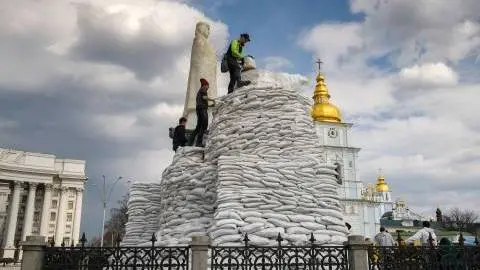Rates: What curve inversion tells us
So the US curve has inverted, or at least in parts. We'll be a bit picky and assert that a 2/5yr inversion is the better predictor of recession; it has not inverted yet. It likely will. But even if it does, history tells us that we could still be years from an actual recession. It has been a remarkably early inversion though, discounting big hikes and then cuts
We like to look at the 2/5yr segment as a future recession indicator
Whenever the curve inverts, there’s an inevitable cry of looming recession. And typically it is true that an inverted curve has tended to occur ahead of recessions. The US curve is typically the one that gets the most attention, as the US yield curve acts as a global benchmark, US data releases tend to receive the most attention, and the US economy itself is a lead indicator for wider global growth. The logic that an inverted curve anticipates a recession centres on the notion that it represents a peaking in short tenor rates, as they get pushed to the limit by central bank rate hiking, and longer tenor rates then fall below short tenor ones in anticipation of rate cuts being the next most likely policy action. And rate cuts would tend to correlate with an economy that has entered a recession or is threatening to do so.
While the market tends to look at the 2/10yr segment as the classic curve to monitor, we prefer to look at the 2/5yr segment. The 5yr is the leading part of the curve, tending to underperform in anticipation of rate hikes and outperforming in anticipation of cuts. As a consequence, the 5yr will lead the 2yr on the way up in rates, and once it senses an imminent peak it will then lead the curve back down, typically before the Fed has completed its rate-hiking agenda. A focus on the 2/5yr helps home in on the ability of the 5yr to anticipate interest rate movements into the future.
The chart below highlights periods where the 2/5yr has inverted, the duration of that inversion, and the duration of the subsequent recession.
The 2/5yr curve and recessions: a decent hit rate

The 2/5yr segment has not inverted just yet (but it will)
There are a few caveats to note. While an inverted curve has tended to be followed by a recession, and there is a remarkably high hit rate, there isn’t inevitably a recession following inversion. For example, there wasn't one following the 1998 inversion, and the 2000 one was followed by a growth recession (so, sub-trend growth rather than an absolute fall in output). That said, every recession had in recent decades has been preceded by a curve inversion. The second important caveat is typically the lag between inversion and recession is a number of years. For example, the 1989 inversion was followed by a recession in 1991, and the 2006 inversion was followed by a recession in 2009.
Note that the 2/5yr has not yet inverted in the current cycle.
5/10yr has inverted, but less explanatory power in that

The 5/10yr segment has inverted, partly as the 10yr is dampened
Using the 2/5yr segment as opposed to the 5/10yr segment implicitly suggests that the 5/10yr has less explanatory power. This is true, but especially in the current cycle, as the 10yr area is being held back by an excess of demand (e.g. central bank buying) oversupply. This causes the 5/10yr to be flatter than it would typically be at this stage of the rate cycle. In fact, in the current cycle, the 5/10yr is a part of the curve that inverted first. The 2/5yr has not as of yet.
An inversion on the 2/5yr would be more telling. That's the part of the curve that inverted in 2019, ahead of the 2020 recession. Okay, the curve did not anticipate Covid, but it did in any case suggest that recession risks had elevated.
Inversion or not, it does not imply an imminent recession
That all being said, and turning from the technicalities, there is a broad inversion of the curve from the 3yr maturity and longer. This is remarkable at this early stage of the rate hiking cycle. The front end is anticipating a series of quick hikes from the Fed while the back end is anticipating future cuts. Will there be a recession? Well, there could indeed be. Most booms are followed by a bust of some description. But even an inverted curve only tells us that a recession is coming two to fours years down the line. A lot can happen over that period.
This publication has been prepared by ING solely for information purposes irrespective of a particular user's means, financial situation or investment objectives. The information does not constitute investment recommendation, and nor is it investment, legal or tax advice or an offer or solicitation to purchase or sell any financial instrument. Read more
Tags
RatesDownload
Download article
31 March 2022
ING Monthly: There’s nothing normal about the global economy This bundle contains 17 Articles